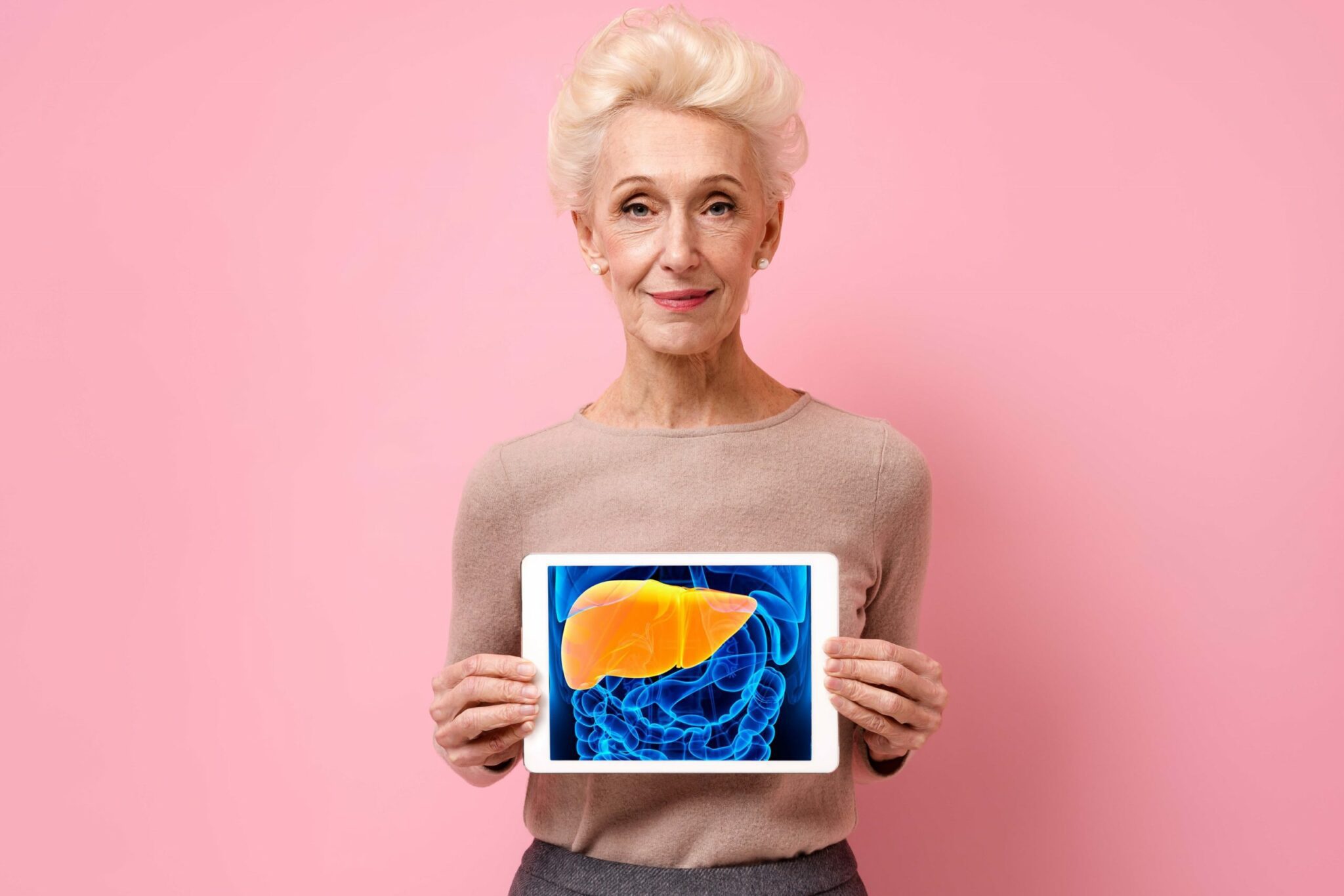COVID-19 Risk Factors – Liver Disease


There are certain factors that put particular groups of people at higher risk of experiencing severe disease if infected by SARS CoV-2. Click here for an overview.
The association between non-communicable disorders (NCDs) and more severe COVID-19 symptoms is consistent worldwide; those with underlying NCDs are more vulnerable to experiencing severe complications following infection with SARS CoV-2.
Some of the most prevalent NCDs include type 2 diabetes, hypertension, cardiovascular disease, chronic lung conditions, chronic kidney disease, chronic liver disease, and cancer.
This article covers liver disease.
What does the liver do?
The liver is an essential detoxifying organ. Its primary function is to filter blood from the digestive tract and the rest of the body. The liver also stores and releases glucose as needed, makes cholesterol, and stores iron. The liver holds certain types of white blood cells, and supports immune function by clearing infections.
The link between liver disease and COVID-19
Liver damage is already known to be an important risk factor for serious complications following infection with some of the more well understood coronaviruses (SARS and MERS). Preliminary work suggests that the same is true for COVID-19.
Liver injury is measured using blood markers of liver activity. High levels of these markers are a common consequence of severe COVID-19 disease. Current estimates put the prevalence of liver injury in those who are critically hospitalised with COVID-19 at 58-78%.
It is not fully understood why a respiratory infection is causing such a pronounced effect in the liver; however, there are certain theories:
- Following infection, SARS CoV-2 enters the cells of the body through a receptor called ACE2. Preliminary work on ACE2 expression suggests that it may be expressed throughout the body. If this theory turns out to be true, COVID-19 has the capacity to become a systemic disease, targeting multiple organs, including the heart, liver, kidneys and lungs. This would suggest direct viral targeting of the liver cells, resulting in cytotoxicity.
- Severe inflammatory response, leading to a systemic destruction of healthy tissue.
- Respiratory failure resulting in insufficient oxygen reaching the tissues, including the liver. This is known as hypoxic hepatitis.
- Drug-induced liver damage. There is no cure for COVID-19, but, when required, patients are given drugs to manage their symptoms. The majority of drugs are deposited in, and cleared through, the liver. This can result in side effects to healthy liver function if the dose or type of drug is toxic to certain individuals. Therefore, it is possible that some of the treatments for COVID-19 may be exacerbating or causing liver dysfunction. Unfortunately the speed of spread of SARS CoV-2, and the need for urgent treatments, has meant that safety data is lacking for some of the medications in use.
- Reactivation of existing liver disease. SARS CoV-2 might be worsening existing chronic liver disease through mechanisms not yet understood.
A cyclical process
The two main factors that seem to contribute to COVID-19-induced liver damage are a strain on the liver and a weakened immune system. Unfortunately, these two factors can be codependent, further exacerbating the issue.
Liver disease involves a process of progressive destruction and regeneration of the liver, often leading to scarring and permanent damage. This progressive liver damage can cause metabolic issues and disrupted insulin resistance/production. This in turn affects the immune system and the ability of the body to clear infections. As a result, the body is less able to respond to infectious pathogens such as SARS CoV-2.
Questions that still require answers
To date we definitely have more questions about SARS CoV-2 and COVID-19, than we do answers. The disease was unheard of prior to December 2019 and as the world fights a global battle, scientists and medics are doing all they can to unravel the mysteries of this novel infection. Some of the questions that remain with regards to an association between COVID-19 and liver damage are:
- In those who recover, once the infection has resolved, what are the lasting effects on the liver?
- Are those with pre-existing liver disease more susceptible to infection? We already know they are at increased risk of serious disease once infected.
- Does SARS CoV-2 directly infect the liver, or are most of the effects secondary?
- How many people are experiencing drug-induced liver damage as a consequence of the medications they have been given?
This is not an exhaustive list, but raises some of the issues currently facing experts in the field.
I have liver disease, what should I do?
Anyone with a pre-existing liver condition should implement stringent social distancing, with a view to minimising the risk of infection. Continuing to take any prescribed medications is essential, as maintaining good overall health reduces the risk of serious illness. Those who are particularly vulnerable are those on immunosuppression medication (given following a liver transplant, or to those with auto-immune hepatitis) and those undergoing chemotherapy or immunotherapy for liver cancer. If you fall into either of these two categories speak to your healthcare provider and try to self-isolate as much as possible.
Sources:
- “Coronavirus (COVID-19) – Health Advice for People with Liver Disease and Liver Transplant Patients.” British Liver Trust, 5 June 2020, britishlivertrust.org.uk/coronavirus-covid-19-health-advice-for-people-with-liver-disease-and-liver-transplant-patients/.
- Jothimani, Dinesh, et al. “COVID-19 and Liver.” Journal of Hepatology, 15 June 2020, doi:10.1016/j.jhep.2020.06.006.
- Parohan, Mohammad, et al. “Liver Injury Is Associated with Severe Coronavirus Disease 2019 (COVID‐19) Infection: a Systematic Review and Meta‐Analysis of Retrospective Studies.” Hepatology Research, 9 May 2020, doi:10.1111/hepr.13510.
- “People Who Are at Higher Risk for Severe Illness.” Centers for Disease Control and Prevention, Centers for Disease Control and Prevention, 14 May 2020, www.cdc.gov/coronavirus/2019-ncov/need-extra-precautions/groups-at-higher-risk.html.
- Sun, Jian, et al. “COVID‐19 and Liver Disease.” Liver International, vol. 40, no. 6, June 2020, pp. 1278–1281., doi:10.1111/liv.14470.












































